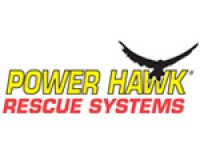When arriving on the scene of a vehicle accident, responders are confronted with a rapid-fire progression of variables that must be processed and addressed. Developing versatile responses to these variables is the key to successfully completing the rescue sequence.
Streamline decision making with a systematic approach for sizing up a vehicle accident and developing a sound and dynamic extrication action plan. Be efficient and focus on the priorities throughout this three-step process to an extrication size-up.
1. Evaluate the scene
Take a deep breath, relax and then use your senses to examine the scene. Start broad by evaluating the crash environment. What do you see, hear and smell?
Apply your SOGs and directives regarding roadway safety and vehicle placement, and perform your initial evaluation from inside of the rig. Make it a habit to roll down your window and remove your headset while you’re pulling up.
Your initial cues should include hazards to rescuers, bystanders and the victim. Consider:
- Traffic exposure
- Roadway design
- Travel speed
- Utilities
- Barriers
- Fuel
- Other hazardous products
Then move your assessment to the vehicles and victims themselves. A 360-degree approach (with a window punch and access tool in hand) is the most accurate evaluation.
Identify the:
- Number of vehicles involved
- Mechanisms of injury
- Number of victims involved
- Condition of victims
Prioritize interventions and treatment. Take a little time to process the vehicles themselves. Analyze the:
- Vehicle design
- Energy status
- Damage incurred
- Supplemental safety system status
- Hybrid vs. traditional
- Potential challenges with material strength and design
Make visual and verbal initial contact with the victims. Something as simple as the victims’ response will indicate what condition they are in and how you need to structure your rescue plan. Establish access points if feasible. These should be rapid access points (e.g., door opening and glass removal) in areas of the vehicle that don’t negatively impact the victim. Try before you pry.
Determine entrapments and probable injuries, and how the vehicle configuration is affecting the victims.
2. Establish a plan
The priorities will always be the safety of the victim, bystanders and your crew. When considering stabilization, initially apply it as a generic blanket that stabilizes all hazards within your control. Stabilize the environment or scene through:
- Vehicle placement
- Cones
- Flares
- Law enforcement
- Additional apparatus
- Available lock-out tag-out capabilities
Make mental notes of what is outside of your control and be prepared to request additional resources in your size-up communication. Don’t bypass immediate hazards. Any hazards that present an immediate threat have to be dealt with.
Use the information you’ve gathered regarding the vehicles and the victims, and apply a rapid triage approach to focus on the victim progression for access and removal. Victims that are stable can be managed through access and EMS treatment even if removal is delayed.
Unstable victims need a higher degree of intervention and will require access and removal. There should be minimal delay in caring for the unstable victims.
Dead is dead. Do not get sidetracked with efforts directed towards victims that present as obvious fatalities. Do not get sidetracked by any efforts that impede progress of the priorities.
Make an extrication plan that is appropriate for the skill level of your crew and incoming companies. Highly technical plans that only you can execute will derail the event quickly. As an operational or incident commander, it is incredibly difficult to manage a scene and simultaneously perform or direct every step of the rescue sequence. Sometimes, more is less and keeping it simple can be more effective than you think.
3. Communicate the plan
When communicating the size-up, follow a verbal progression that you practice routinely. This will help you gather your thoughts and communicate them effectively. Don’t provide trivial or unnecessary information – keep it condensed. Say who you are, what you have and what you want done. Here is an example:
“Rescue X is on the scene of a two-vehicle accident with moderate-to-heavy damage to both vehicles. Both vehicles are on all four wheels and we have no additional hazards. One victim is entrapped in the vehicle, two other victims are out of the vehicle. We have multiple minor-to-moderate injuries to victims. Safety zone has been established. Rescue 91 will have command and accountability until Bn X arrives. Make this a working extrication. First-due engine get a line down, first-due EMS to the extrication vehicle, all additional units to other victims and expand the safety zone with apparatus placement.”
There are many variables to this communication based on pre-determined tactics and operating guidelines. Don’t communicate what is inherently expected and performed. For example, departments who have run cards that appropriately support multiple apparatus and their correlating responsibilities (as well as apparatus placement requirements and support from law enforcement) can bypass communicating objectives for incoming apparatus. These are implied operations that should be done without direction.
If you don’t have these types of directives in place, I strongly encourage you to do so. They will streamline your operation and allow you to spend more time on the things that directly impact viable outcomes.














